Scotland cuts drink-drive alcohol limit
- Published
- comments
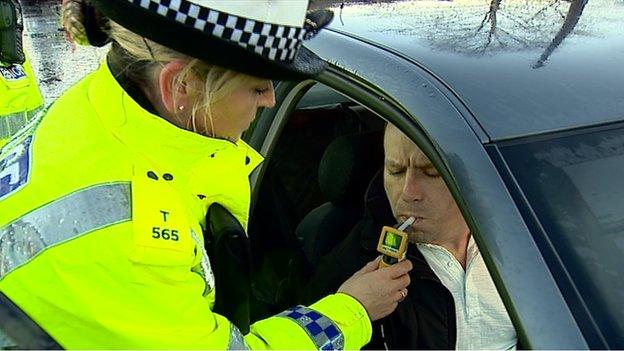
The change brings Scotland into line with most of the rest of Europe
A new law has come into force which makes the legal drink-drive limit in Scotland lower than elsewhere in the UK.
The change reduces the legal alcohol limit from 80mg to 50mg in every 100ml of blood.
Campaigners believe the new limit will cut the number of deaths and serious injuries on Scottish roads.
The limit elsewhere in the UK will remain at 80mg - the joint highest in Europe.
Northern Ireland is currently considering making the same reduction as Scotland.
However, the UK government said it had no plans to reduce the drink drive limit in England and Wales as it said this would have no impact on "high risk offenders".
Police and road safety campaigners have said an average of 20 people die on Scotland's roads each year as a result of collisions involving people who were driving while over the legal alcohol limit.
A further 90 were seriously injured and 340 slightly injured as a result of drink-driving related collisions last year.
The amount a motorist can drink before being over the limit depends on factors including their gender, age, weight, metabolism, stress levels and whether they have eaten recently, as well as the size and strength of the drink.
Experts have said the new 50mg limit, which came into force at midnight, means that an average man would be limited to just under a pint of beer or a large glass of wine, and women to half a pint of beer or a small glass of wine.
UK drink-drive casualties
230
Killed in 2012
1,640
Killed in 1979
-
1,200 Seriously injured in 2012
-
8,300 Seriously injured in 1979
-
8,510 Slightly injured in 2012
-
21,490 Slightly injured in 1979
But an awareness-raising campaign ahead of the change warned that "the best advice is none" - meaning people should not drink any alcohol if they intend to drive.
Motorists have also been reminded it will take longer before they are legally able to drive the morning after drinking alcohol.
For most people, it takes about an hour to process one unit of alcohol - so it could take up to 12 hours to be safe to drive after drinking a bottle of wine.

In depth: drinking and driving
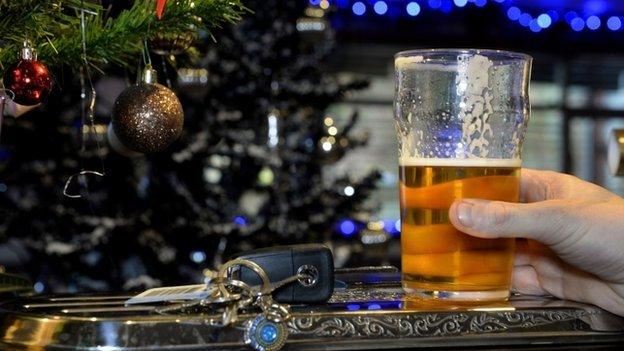

The Scottish Parliament voted unanimously in favour of the new law, which brings Scotland into line with much of Europe, on 18 November.
The Scottish government has previously said it had sought a joint approach with Westminster but the UK government decided to retain the higher 80mg limit, which in Europe is only shared by Malta.
It means that a driver could leave England under the legal alcohol limit but find they are breaking the law once they pass over the border into Scotland.
As well as a media campaign to raise awareness, events have been taking place at Scottish supermarkets, service stations, airports and at key railway stations, such as Edinburgh Waverley and Glasgow Central, to highlight the new limit.

By BBC Scotland's Huw Williams
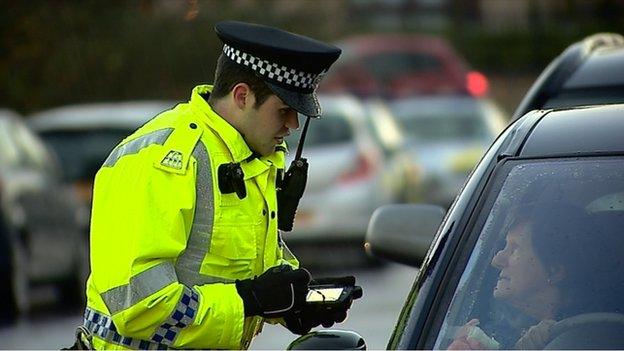
Six police cars clustered together in a lay-by off Cathcart Road in Glasgow's southside - their blue and yellow livery reflecting passing headlights almost as brightly as the high-vis jackets on police officers lining the street.
From just after 07:30 drivers heading into the city centre found themselves at risk of being pulled over for a breath-test, and an expert eye cast over their vehicles - all carried out in front of TV cameras, radio microphones and snappers from the press.
But Assistant Chief Constable Bernie Higgins of Police Scotland was forthright. "This isn't a publicity stunt", he told BBC radio's Good Morning Scotland programme.
As far as he is concerned it is all about drivers accepting responsibility for their actions.
"Even at the lower end of the new limit you're still three times more likely to kill somebody else on the road because of the impairment that you've got."
Most of those stopped this morning were below the legal limit - and happy with the change in the law.
"Only scum drink and drive" one man told me.
But I watched one driver fail the roadside breath-test.
He was handcuffed and driven away. Taken to the police office to give more samples on an evidential machine.

Scotland's Justice Secretary Michael Matheson has predicted the lower limit will save lives.
Mr Matheson said: "Scotland is leading the way across the UK. The new limit has backing from experts, road safety campaigners and the majority of the public north and south of the border.
"This change will bring Scotland into line with most of Europe. It's not about criminalising drivers, it's about making our roads safer and sending a clear message that even one alcoholic drink will affect the ability to drive.
"All the evidence from the Republic of Ireland shows reducing the limit means less convictions and lower blood alcohol counts.
"Today we are sending a clear message to drivers who continue to ignore the warnings that there is never an excuse to drink and drive."

What is the legal limit elsewhere in Europe?
(All figures per 100ml of blood)
Zero - Romania, Slovakia, Hungary, Czech Republic, Slovenia (drivers with less than three years experience), Germany (less than two years experience or aged under 21)
20mg - Estonia, Poland, Sweden, Cyprus (south), Ireland (learner drivers only), Latvia (less than two years experience), Lithuania (less than two years experience), Greece (less than two years experience), Luxembourg (less than two years experience and professional drivers), France (bus drivers only)
24mg - Slovenia
30mg - Germany (for those involved in an accident)
40mg - Lithuania
50mg - Scotland, Austria, Belgium, Bulgaria, Croatia, Denmark, Finland, France, Germany (if not involved in an accident), Gibraltar, Greece, Ireland, Italy, Latvia, Luxembourg, Netherlands, Portugal, Spain, Cyprus (north)
80mg - England, Wales, Northern Ireland, Malta

Campaigners have urged the UK government to follow Scotland's lead in taking a tougher stance on drinking and driving, with road safety organisation Brake calling for a limit of just 20mg to be brought in.
Brake has said that 20mg is as close to an absolute ban as you can get without accidentally penalising those with trace elements of alcohol in their bloodstream.
Its deputy chief executive, Julie Townsend, said: "We welcome the new lower limit in Scotland as a positive stepping stone towards zero-tolerance. We are calling on the UK government to take action on drink-driving.
"We have the highest drink-drive limit in Europe, sending out the dreadful message that a drink or two before driving is acceptable. The evidence shows that a tough approach helps prevent casualties."
Leigh Payne, whose sister was killed after she accepted a lift from a man who would later prove to be over the legal limit, is now a volunteer with Brake.
She said her sister would not have got in the car if she had known he had been drinking.
"She was well aware of the fact that taking a drink when you are driving is not on," she said.
"I don't think anybody is capable of driving with alcohol in their system. Nobody can have a clear conscience with alcohol in their system.
"I think this change sends a clear message that you cannot have a drink and drive. If you have any alcohol in your system you will be impaired."
She added: "When you have a drink and then get into a car, your car then becomes a lethal weapon."
"There has been a culture change in drink-drive attitudes" says Tim Shallcross from the Institute of Advanced Motorists
Forensic toxicologist Dr Hazel Torrance explains how Scotland's new lower drink-drive limit could affect drivers
But UK Road Safety Minister Robert Goodwill said: "Britain already has tough penalties to tackle drink driving and the government believes increased enforcement is a more effective deterrent than a change in the law.
"We are removing the automatic right for drivers who fail a breathalyser test to demand a blood and urine test.
"High risk offenders are now also required to prove they are no longer alcohol-dependent before being allowed to drive."
The Institute of Advanced Motorists has questioned whether lowering the limit will improve road safety.
The number of people killed in drink-driving related collisions across the UK has fallen dramatically over the past 35 years, with the most recent figures, external showing that an estimated 230 people were killed in 2012, compared with 1,640 in 1979.
The 230 drink-drive fatalities in 2012 accounted for 13% of all reported road deaths.
Of these, an estimated 165 of those who died were motorists who were over the legal limit, with the remaining 65 being other road users who were involved in the accident but were not necessarily over the legal alcohol limit themselves.
- Published3 December 2014
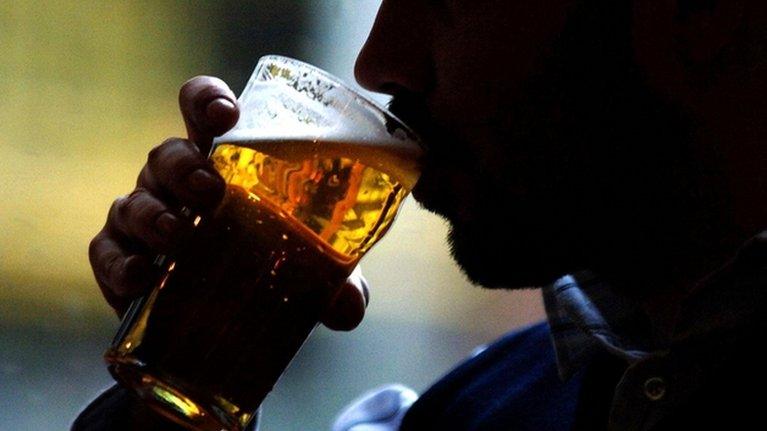
- Published5 December 2014
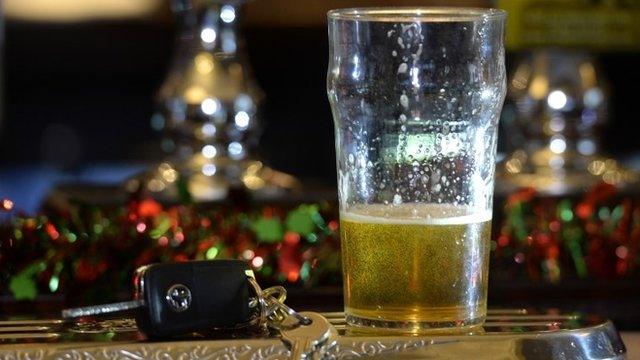
- Published3 December 2014
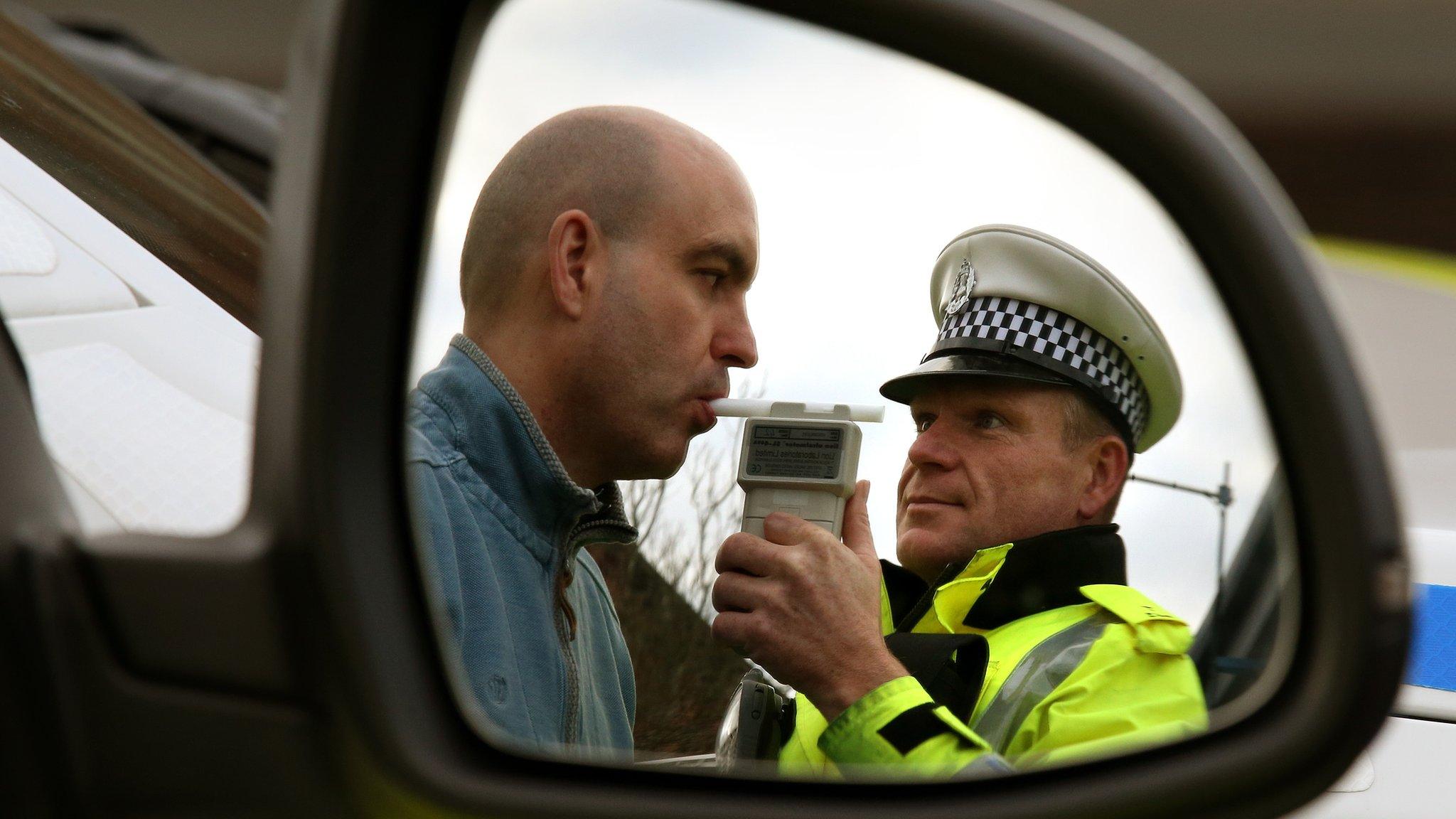
- Published4 December 2014
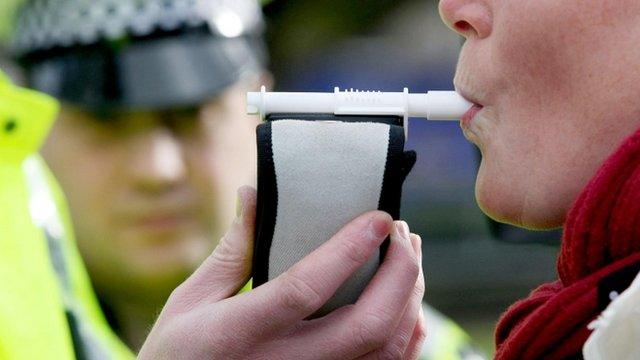
- Published17 November 2014
